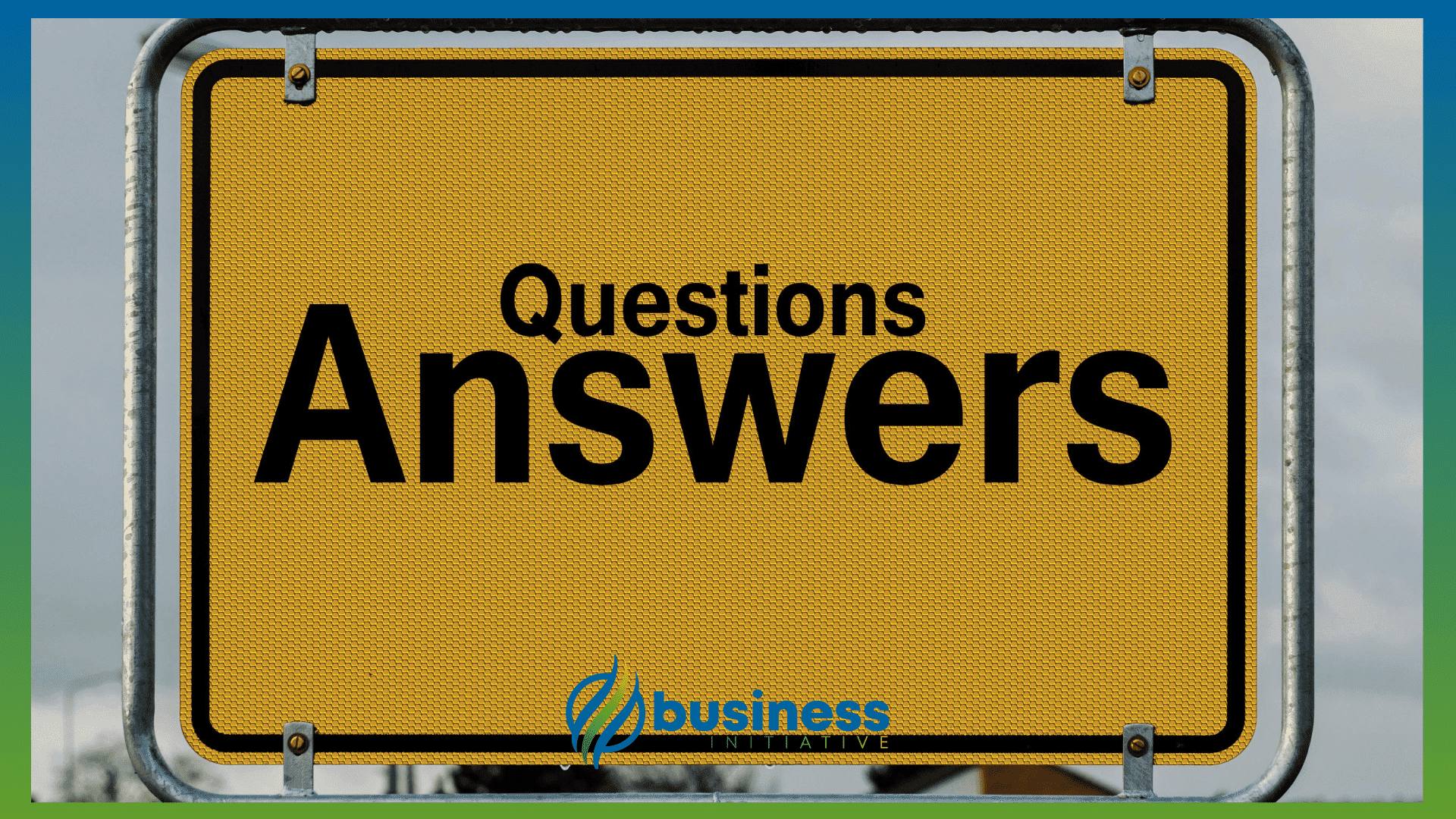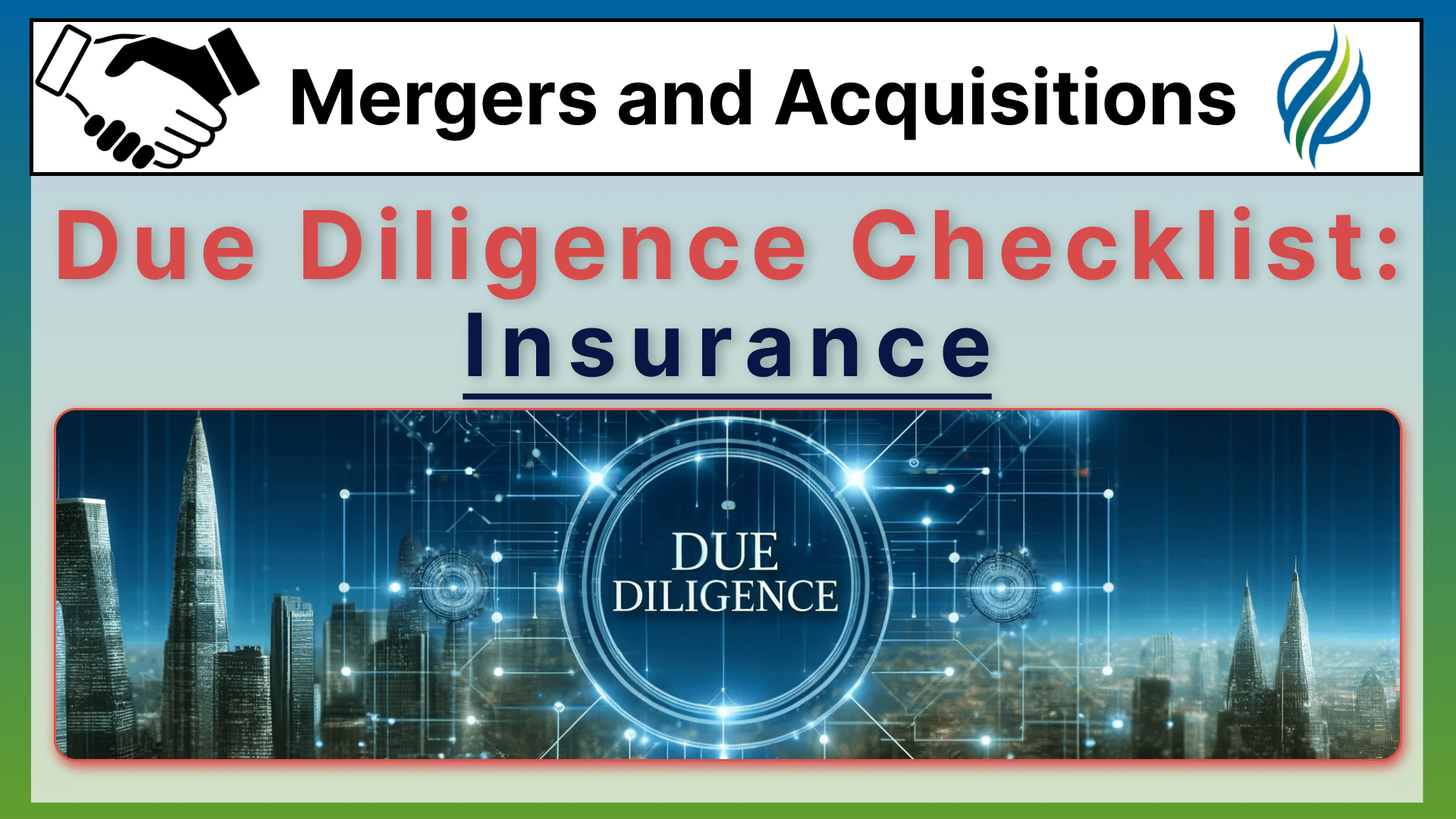In mergers and acquisitions, understanding insurance policies is crucial.
This article breaks down key types of insurance, like general liability and D&O coverage.
It explains why they matter and how to review them.
Knowing this helps you avoid hidden risks and ensures a smooth transaction.
 Key Takeaways
Key Takeaways
- Reviewing general liability insurance reveals the company’s protection against common risks.
- Evaluating D&O insurance safeguards leadership from personal liability.
- Assessing IP insurance protects valuable intellectual property assets.
- Reviewing employee liability and worker’s compensation insurance ensures compliance and employee protection.
- Examining key man and umbrella policies provides comprehensive coverage for critical risks.
To get the most out of this guide, follow the practical steps and ask the self-assessment questions provided.
This ensures you cover all bases.
Dive in to secure your investments and make informed decisions.
 Table of Contents
Table of Contents
In any acquisition, conducting a thorough review of the target company’s insurance policies is essential.
This process involves examining key insurance coverages such as general liability, directors and officers (D&O) insurance, intellectual property insurance, employee liability and worker’s compensation insurance, key man insurance, and umbrella policies.
Each of these insurance types provides critical insights into the company’s risk management strategies and potential liabilities, offering practical benefits in terms of mergers and acquisitions due diligence.
Ready to master M&A due diligence?
Keep reading!

➤ MORE: Check out the FULL Due Diligence Checklist here
Review General Liability Insurance:
General liability insurance protects a business from various claims, including bodily injury, property damage, and personal injury.
Reviewing these policies is crucial to ensure that the company has adequate coverage against common business risks.
Practical Benefits:
-
Identifies potential financial liabilities.
-
Ensures compliance with industry standards.
-
Provides insight into the company’s risk exposure.
Importance:
-
Essential for assessing the company’s overall risk profile.
-
Determines the adequacy of protection against common claims.
Practical Steps:
-
Obtain copies of all general liability insurance policies from the target company.
-
Verify the coverage limits, deductibles, and any exclusions listed in the policies.
-
Compare the company’s coverage limits to industry standards to assess adequacy.
-
Analyze past claims to understand the company’s claims history and risk management effectiveness.
Self-Assessment Questions:
-
What general liability insurance policies does the company have?
-
What are the coverage limits and deductibles for these policies?
-
Are there any exclusions that could impact coverage?
-
How does the company’s coverage compare to industry standards?
Resources:
Evaluate Directors and Officers (D&O) Insurance:
Directors and officers (D&O) insurance protects the company’s leadership against personal liability arising from their managerial decisions.
Evaluating these policies is crucial to ensure the company’s directors and officers are adequately protected.
Practical Benefits:
-
Shields company leaders from personal financial loss.
-
Mitigates risks associated with managerial decisions.
-
Enhances leadership stability and confidence.
Importance:
-
Crucial for protecting key decision-makers.
-
Important for attracting and retaining top executive talent.
Practical Steps:
-
Obtain copies of all D&O insurance policies.
-
Verify the coverage limits, deductibles, and any exclusions in the policies.
-
Assess the adequacy of the coverage in relation to the company’s size and complexity.
-
Review the frequency of policy updates to ensure current protection standards are met.
Self-Assessment Questions:
-
What D&O insurance policies are in place?
-
What are the coverage limits and deductibles for these policies?
-
Are there any exclusions that could impact coverage?
-
How adequate is the coverage for protecting directors and officers?
Resources:
Assess Intellectual Property Insurance:
Intellectual property (IP) insurance protects a company’s valuable IP assets, such as patents, trademarks, and copyrights, from infringement claims and legal disputes.
Assessing these policies ensures that the company’s innovations are well protected.
Practical Benefits:
-
Provides financial protection against IP infringement.
-
Ensures the company can defend its IP assets in court.
-
Supports the valuation of the company’s intangible assets.
Importance:
-
Vital for companies with significant IP assets.
-
Helps in maintaining competitive advantage and market position.
Practical Steps:
-
Review any IP insurance policies the company holds.
-
Verify the coverage limits, deductibles, and any exclusions.
-
Evaluate the scope of coverage for different types of IP assets.
-
Assess how well the coverage aligns with the company’s IP portfolio.
Self-Assessment Questions:
-
Does the company have IP insurance coverage?
-
What are the coverage limits and deductibles for these policies?
-
Are there any exclusions that could impact coverage?
Resources:
Review Employee Liability and Worker’s Compensation Insurance:
Employee liability and worker’s compensation insurance cover claims related to employee injuries and work-related illnesses.
Reviewing these policies is essential to ensure the company’s compliance with labor laws and protection against employee-related risks.
Practical Benefits:
-
Mitigates financial risks related to employee claims.
-
Ensures compliance with state and federal regulations.
-
Enhances employee trust and safety.
Importance:
-
Critical for maintaining a safe and compliant workplace.
-
Provides financial stability by covering employee-related claims.
Practical Steps:
-
Obtain copies of employee liability and worker’s compensation insurance policies.
-
Verify the coverage limits, deductibles, and any exclusions.
-
Assess the company’s claims history to understand past issues and risk management practices.
-
Compare the coverage to industry standards to evaluate adequacy.
Self-Assessment Questions:
-
What employee liability and worker’s compensation insurance policies does the company have?
-
What are the coverage limits and deductibles for these policies?
-
Are there any exclusions that could impact coverage?
-
How does the company’s coverage compare to industry standards?
Resources:
Evaluate Key Man Insurance:
Key man insurance provides coverage against the loss of key executives whose absence could significantly impact the company’s operations.
Reviewing these policies ensures that the company is protected from the financial consequences of losing essential personnel.
Practical Benefits:
-
Provides financial stability in case of loss of key personnel.
-
Helps in business continuity planning.
-
Reduces risks associated with executive turnover.
Importance:
-
Essential for companies heavily reliant on a few key individuals.
-
Supports succession planning and leadership stability.
Practical Steps:
-
Determine if the company has key man insurance policies for critical executives.
-
Verify the coverage limits and terms of these policies.
-
Identify the individuals covered and assess their importance to the company’s operations.
-
Evaluate any gaps in key man insurance coverage and address them accordingly.
Self-Assessment Questions:
-
Does the company have key man insurance for critical executives?
-
What are the coverage limits and terms of these policies?
-
Who are the individuals covered by these policies?
-
How critical are these individuals to the company’s operations?
Resources:
Assess Umbrella Policies:
Umbrella insurance policies provide additional coverage beyond the limits of standard policies, offering comprehensive protection against various risks.
Assessing these policies is crucial to ensure that the company has extensive coverage for unexpected events.
Practical Benefits:
-
Extends coverage limits beyond primary policies.
-
Provides additional protection for significant claims.
-
Ensures comprehensive risk management.
Importance:
-
Crucial for covering large and unexpected claims.
-
Enhances overall risk management strategy.
Practical Steps:
-
Obtain copies of any umbrella insurance policies.
-
Verify the coverage limits, deductibles, and any exclusions.
-
Assess the comprehensiveness of the coverage provided by these policies.
-
Review the frequency of policy updates to ensure they meet current risk management needs.
Self-Assessment Questions:
-
What umbrella insurance policies does the company have?
-
What are the coverage limits and deductibles for these policies?
-
Are there any exclusions that could impact coverage?
-
How comprehensive is the coverage provided by these umbrella policies?
-
How often are these policies reviewed and updated?
Resources:
FAQs - Frequently Asked Questions About Conducting Due Diligence into a Company’s Insurance

Why is reviewing general liability insurance important in M&A?
It helps identify potential financial liabilities and ensures compliance.
Learn More...
Reviewing general liability insurance is crucial for identifying potential financial liabilities that could affect the transaction.
This review ensures the company’s coverage aligns with industry standards.
It provides peace of mind that the business is adequately protected against common risks like bodily injury, property damage, and personal injury claims.
This due diligence step is essential for assessing the overall risk profile of the target company.
What does Directors and Officers (D&O) insurance cover?
D&O insurance protects company leaders from personal liability.
Learn More...
Directors and Officers (D&O) insurance provides coverage for the personal liability of a company's directors and officers arising from their decisions and actions in their official capacities.
This insurance is vital as it helps protect the personal assets of company leaders and covers legal fees, settlements, and other costs associated with lawsuits alleging wrongful acts such as breach of duty, negligence, and mismanagement.
Ensuring adequate D&O coverage is in place can attract and retain top executive talent.
How does intellectual property insurance benefit a business?
It protects the company's IP assets from infringement and legal disputes.
Learn More...
Intellectual property (IP) insurance provides financial protection against the costs of legal disputes related to patents, trademarks, copyrights, and other IP assets.
This coverage is crucial for businesses with significant IP holdings as it ensures they can defend their innovations and maintain their competitive advantage without bearing crippling legal costs.
Proper IP insurance can also support the valuation of the company’s intangible assets during an acquisition.
What are the key steps in assessing employee liability and worker’s compensation insurance?
Review policies, verify coverage limits, and compare to industry standards.
Learn More...
To assess employee liability and worker’s compensation insurance, start by obtaining and reviewing all relevant policies to understand coverage limits, deductibles, and exclusions.
Verify these details against industry standards to ensure adequacy.
Additionally, analyze the company's claims history to identify any recurring issues or risks.
This assessment ensures compliance with state and federal regulations, mitigates financial risks related to employee claims, and enhances workplace safety and trust.
Why is key man insurance critical for some companies?
It protects against the financial impact of losing essential personnel.
Learn More...
Key man insurance is critical for companies heavily reliant on a few key individuals.
This insurance provides financial protection in the event of the death or disability of a critical executive, ensuring business continuity and stability during a potentially disruptive period.
It covers costs associated with finding and training a replacement and can provide a financial buffer to maintain operations.
This coverage is particularly important in industries where specific skills or knowledge are crucial to the company's success.
What are umbrella insurance policies and why are they important?
They provide additional coverage beyond standard policies.
Learn More...
Umbrella insurance policies offer extra liability coverage that goes beyond the limits of the company's primary insurance policies, such as general liability, auto liability, and employers' liability.
These policies are important because they provide additional protection against large and unexpected claims, ensuring comprehensive coverage for various risks.
This added layer of security can be crucial in safeguarding the company’s financial health and stability, particularly in high-risk industries or scenarios involving substantial claims.
How often should a company review its insurance policies?
At least annually or whenever there are significant changes in the business.
Learn More...
A company should review its insurance policies at least annually to ensure coverage remains adequate and up-to-date with the current business environment.
Additionally, policies should be reviewed whenever there are significant changes in the business, such as mergers, acquisitions, expansion into new markets, or the introduction of new products or services.
Regular reviews help identify any coverage gaps, adjust limits as needed, and ensure compliance with evolving regulations and industry standards.
In Summary…
Navigating the complexities of mergers and acquisitions requires a thorough understanding of the target company’s insurance policies.
This article has outlined critical steps for reviewing various types of insurance, including general liability, directors and officers (D&O), intellectual property, employee liability, worker’s compensation, key man, and umbrella policies.
By meticulously examining these coverages, entrepreneurs can uncover potential risks, ensure adequate protection, and make informed decisions that safeguard their investments.
Applying this information practically means taking proactive steps to obtain and verify insurance documents, assess coverage limits, and identify any gaps or exclusions.
By doing so, you mitigate financial liabilities, comply with industry standards, and secure comprehensive protection for your business.
This due diligence process not only enhances your risk management strategy but also instills confidence in stakeholders and facilitates smoother transactions.
By using the detailed steps and self-assessment questions provided, you gain a clear roadmap for conducting effective insurance due diligence.
This ensures you leave no stone unturned, protecting your interests and laying a solid foundation for future business success.
Ready to take the next step in mastering M&A due diligence?
Schedule a consultation call with Business Initiative or reach out using our contact form is you have any questions.
Subscribe to the Initiative Newsletter for more insights and updates on M&A strategies, and follow us on X for real-time tips and advice.
Sources
- Insurance Information Institute: For comprehensive information on various types of insurance.
- National Association of Insurance Commissioners: For regulatory standards and insurance industry data.
- The D&O Diary: For detailed insights into Directors and Officers (D&O) insurance.
- Association of Corporate Counsel: For resources on corporate legal and insurance issues.
- United States Patent and Trademark Office: For information on intellectual property protections.
- World Intellectual Property Organization: For global IP protection guidelines.
- Occupational Safety and Health Administration (OSHA): For workplace safety regulations and employee liability information.
- National Council on Compensation Insurance (NCCI): For worker’s compensation insurance data and guidelines.
- Business Continuity Institute: For resources on business continuity and key man insurance.
- A.M. Best: For insurance company ratings and industry reports.
- Standard & Poor’s: For financial risk assessments and industry ratings.


